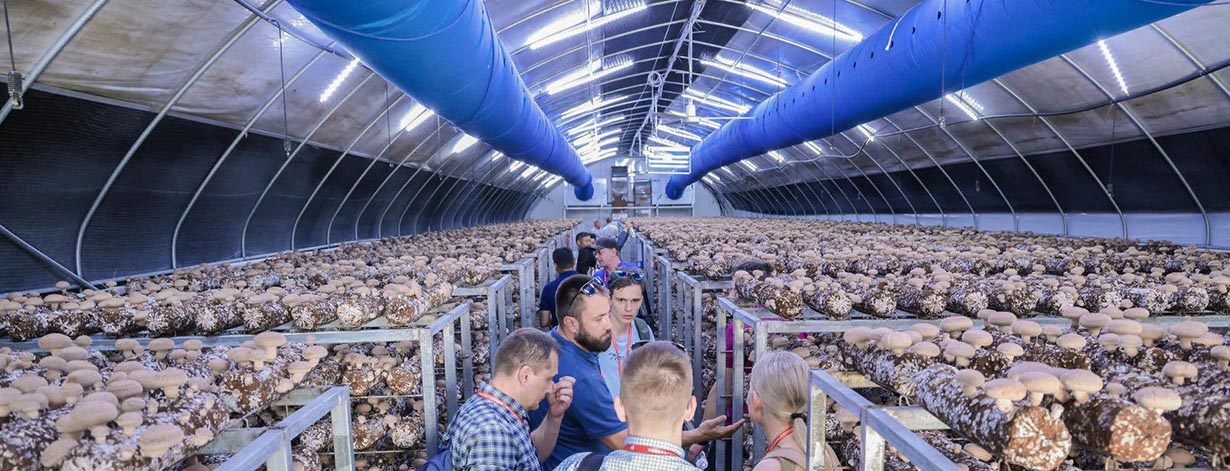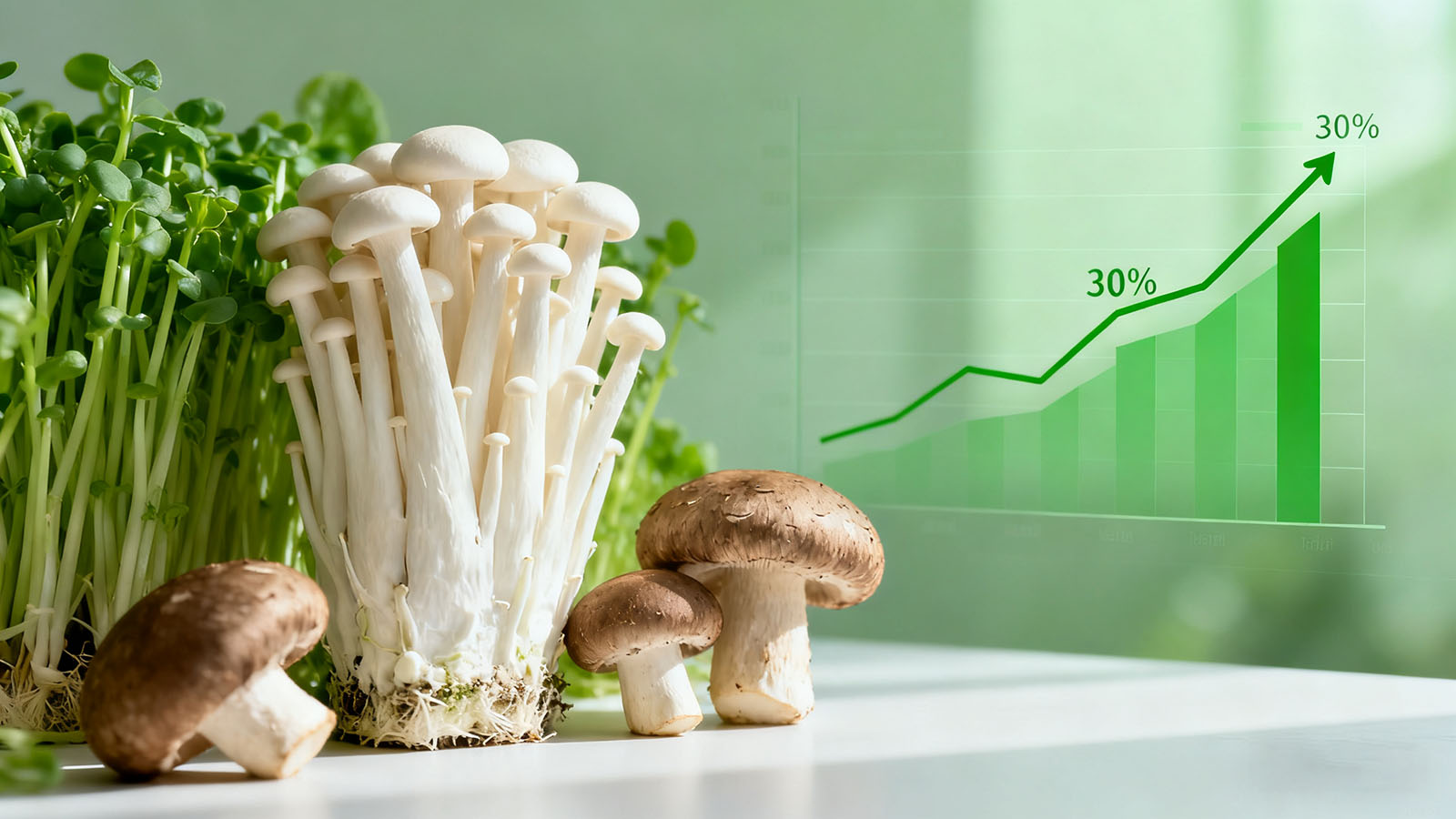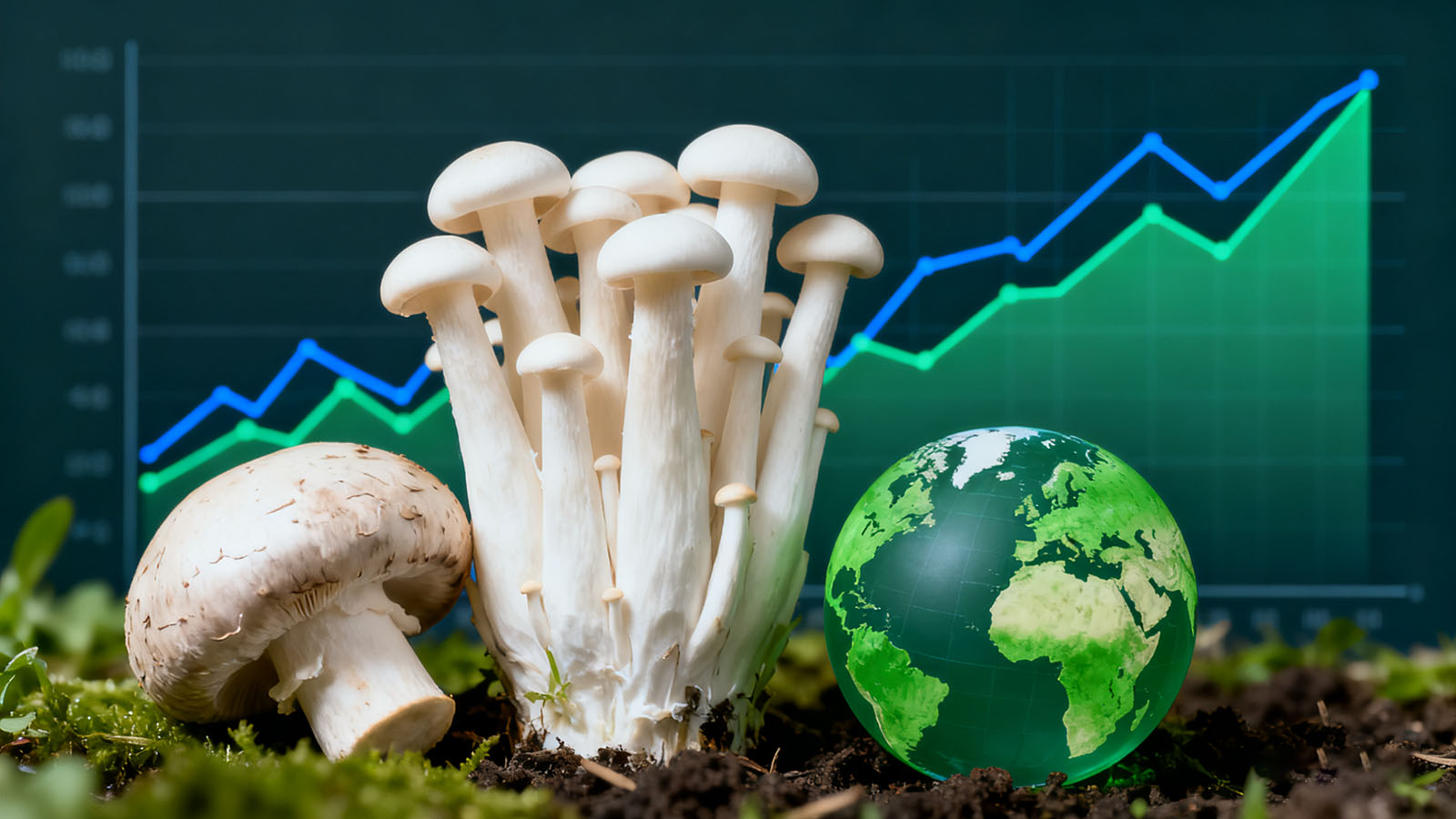
The global food industry is undergoing a profound transformation from "eating enough" to "eating well." Edible mushrooms, with their unique advantages of high protein, low calories, and rich functional active ingredients, have become a core track in the healthy food revolution. The latest data shows that the global edible mushroom market will have a compound annual growth rate of 20% from 2023 to 2028, with an expected market size exceeding 120 billion US dollars by 2025. This article focuses on the needs of industry decision-makers, deeply analyzes the three core drivers, four key technology upgrades, and five major trade growth poles that drive market explosion, and provides a practical guide for participants in the 2025 Edible Mushroom Full Industry Chain Innovation Expo (April 14-16, Xiamen).
I. Three Business Logics1. Health Consumption Upgrade
As global consumers' health awareness continues to increase, the demand for functional foods has seen explosive growth. According to market research, the demand for functional foods grew by 45% year-on-year in 2023, with edible mushrooms, as a natural functional food ingredient, being highly favored by consumers. Edible mushrooms are rich in various nutrients, such as protein, dietary fiber, vitamins, and minerals, while being extremely low in calories, meeting modern consumers' pursuit of healthy diets. Additionally, the market penetration rate of ready-to-eat edible mushroom products has reached 35%, with the demand for convenient and healthy edible mushroom products continuously increasing. From a cost perspective, the production cost of mushroom protein is 30% lower than that of plant-based meat, giving edible mushrooms a significant competitive advantage in replacing traditional meat and plant protein markets, making them the "new darling" of the healthy food market.
2. Technological RevolutionTechnological advancements have provided strong momentum for the rapid development of the edible mushroom industry. Currently, the proportion of factory-based production capacity in the edible mushroom industry has reached 68%. Through modern cultivation facilities and technologies, year-round stable production has been achieved, significantly increasing yield and quality. In the harvesting stage, the application of robotic technology has increased harvesting efficiency by 55%, reduced labor costs, and enhanced product standardization. In terms of strain development, the use of gene editing and biological breeding technologies has shortened the development cycle to 18 months, allowing for the faster introduction of new strains that meet market demands, such as high-yield, high-nutritional value, and pest-resistant strains, providing strong technological support for industry development.
3. Trade RestructuringChanges in the global trade landscape have brought new opportunities to the edible mushroom market. The import volume of edible mushrooms in the Southeast Asian market has grown by 80% in recent years, mainly due to the increasing demand for healthy foods by local consumers and the insufficient local production capacity. The European Union market offers a premium of up to 120% for organic edible mushrooms, with consumers willing to pay higher prices for high-quality and environmentally friendly organic products, providing a significant profit margin for exporters of organic mushrooms. Additionally, the export volume of halal-certified edible mushrooms to the Middle East has increased by 200%. With the opening of the local market and the growing demand for healthy foods, halal certification has become an important barrier to entry, also bringing new business growth opportunities for related enterprises.
II. Four Technological BreakthroughsSmart Cultivation
Smart cultivation technology is an important hallmark of the modernization of the edible mushroom industry. Through advanced environmental control systems, the error in the cultivation environment can be controlled within 0.5%, ensuring that mushrooms grow under optimal conditions, thereby increasing yield and quality. At the same time, the implementation of 24-hour unmanned operations has significantly reduced labor costs and intensity, improving production efficiency. Additionally, smart cultivation technology can precisely control the cultivation process through data analysis and predictive models, reducing the rate of spoiled packages to 0.3%, minimizing waste and enhancing economic benefits.
Deep Processing InnovationInnovations in deep processing technology have provided the possibility to increase the added value of edible mushroom products. Through advanced processing techniques, the retention rate of active ingredients in edible mushrooms can reach 98%, maximizing the preservation of their nutritional and functional properties. The application of 3D printing technology allows edible mushroom products to simulate the texture and taste of meat, meeting consumers' demand for alternative proteins. Meanwhile, breakthroughs in preservation technology have extended the shelf life of edible mushroom products by 300%, significantly enhancing their market competitiveness and transportation radius.
Strain DevelopmentStrain development is one of the core competencies of the edible mushroom industry. Through the application of biotechnology, the biological conversion rate of strains can reach 85%, which means higher yields and lower production costs. Additionally, the development of heat-resistant varieties allows edible mushrooms to grow in a wider range of climatic conditions. For example, varieties that can withstand temperatures up to 35°C can adapt to high-temperature environments, reducing production risks associated with climatic limitations. Taking morel mushrooms as an example, strain development has reduced their production costs by 60%, making large-scale cultivation and market promotion possible.
Green Supply ChainThe construction of a green supply chain is key to the sustainable development of the edible mushroom industry. Through the comprehensive utilization of spent mushroom substrate, a 100% resource utilization rate has been achieved, reducing waste emissions and lowering production costs. At the same time, by optimizing logistics and packaging, the carbon footprint has been reduced by 40%, in line with global environmental trends. The application of smart labeling and traceability technology allows consumers to understand the entire process of product cultivation, processing, and transportation through scanning, enhancing consumer trust in the product and improving brand image.
III. Five Major Trade OpportunitiesRegional Markets
Different regional markets have diverse demands for edible mushrooms:
Southeast Asian Market: Huge demand for ready-to-eat edible mushroom products, with an annual demand reaching 500,000 tons, mainly focusing on common varieties such as shiitake and enoki mushrooms.North American Market: Strong demand for edible mushroom extracts, with imports reaching 1.2 billion US dollars in 2023, mainly used for the production of health supplements and functional foods.
European Market: Growing demand for organic fresh mushrooms, with prices ranging from 8 to 12 euros per kilogram. High-quality and environmentally friendly organic edible mushrooms have a broad market prospect in Europe.Trade Infrastructure
The improvement of trade infrastructure has provided strong support for the international development of the edible mushroom industry:
Xiamen: As an important trading port, constructing a 100,000-ton cold storage facility that can provide good conditions for the storage and transportation of edible mushrooms, reducing losses.China-Europe Railway: Reduced transportation costs by 25%, significantly shortened transportation time, and improved the timeliness and freshness of products.
B2B Platforms: Transaction volume has reached 500 million US dollars, providing enterprises with broader market channels and cooperation opportunities.Certification System
The improvement of the certification system is the "passport" for edible mushroom products to enter the international market:
GAP Certification: Volume of orders increased by 70% in the past year. Enterprises obtaining this certification can more easily enter the international market and gain more orders.BRCGS Certification: A necessary condition for entering the high-end markets in Europe and America, providing strong assurance for the quality and safety of products.
Halal Certification: Demand for halal-certified edible mushrooms in Israel's kosher market reaches 300 million US dollars. Certified enterprises can share in this high-value market.




创新博览会LOGO-white.png)


Copyright © China Chamber of Commerce of Food, Native Produce and Animal Products Edible Fungi and Products Branch
京公网安备11010102004652号 京ICP备05021290号-29 | Technical Support: Starify Privacy Policy Sitemap Contact Us
创新博览会LOGO.png)


